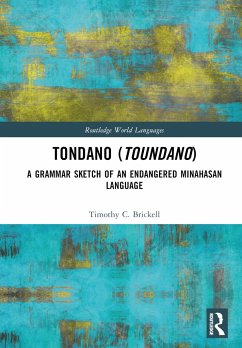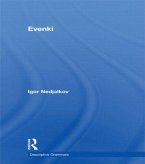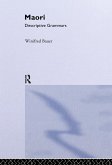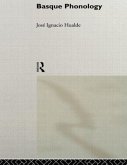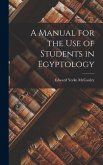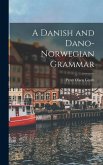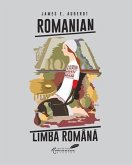- Gebundenes Buch
- Merkliste
- Auf die Merkliste
- Bewerten Bewerten
- Teilen
- Produkt teilen
- Produkterinnerung
- Produkterinnerung
This monograph is a grammatical description of Tondano, an endangered and under-documented Austronesian language spoken in the northern part of the island of Sulawesi, Indonesia. It is a modified version of the related doctoral dissertation completed at La Trobe University, Bundoora, Victoria, Australia (2015).
Andere Kunden interessierten sich auch für
![Evenki Evenki]() Igor NedjalkovEvenki469,99 €
Igor NedjalkovEvenki469,99 €![Maori Maori]() Winifred BauerMaori389,99 €
Winifred BauerMaori389,99 €![Basque Phonology Basque Phonology]() Jose Hualde &Basque Phonology202,99 €
Jose Hualde &Basque Phonology202,99 €![A Manual for the Use of Students in Egyptology A Manual for the Use of Students in Egyptology]() Edward Yorke McCauleyA Manual for the Use of Students in Egyptology35,99 €
Edward Yorke McCauleyA Manual for the Use of Students in Egyptology35,99 €![A Danish and Dano-Norwegian Grammar A Danish and Dano-Norwegian Grammar]() Peter Olsen GrothA Danish and Dano-Norwegian Grammar36,99 €
Peter Olsen GrothA Danish and Dano-Norwegian Grammar36,99 €![The Student's Maráthé Grammar The Student's Maráthé Grammar]() Ganpatrao Raqhunath NavalkarThe Student's Maráthé Grammar41,99 €
Ganpatrao Raqhunath NavalkarThe Student's Maráthé Grammar41,99 €![Romanian/Limba Româna Romanian/Limba Româna]() James AugerotRomanian/Limba Româna43,99 €
James AugerotRomanian/Limba Româna43,99 €-
-
-
This monograph is a grammatical description of Tondano, an endangered and under-documented Austronesian language spoken in the northern part of the island of Sulawesi, Indonesia. It is a modified version of the related doctoral dissertation completed at La Trobe University, Bundoora, Victoria, Australia (2015).
Hinweis: Dieser Artikel kann nur an eine deutsche Lieferadresse ausgeliefert werden.
Hinweis: Dieser Artikel kann nur an eine deutsche Lieferadresse ausgeliefert werden.
Produktdetails
- Produktdetails
- Verlag: Taylor & Francis
- Seitenzahl: 266
- Erscheinungstermin: 30. Dezember 2022
- Englisch
- Abmessung: 244mm x 170mm x 18mm
- Gewicht: 653g
- ISBN-13: 9781138549975
- ISBN-10: 1138549975
- Artikelnr.: 63118834
- Herstellerkennzeichnung
- Produktsicherheitsverantwortliche/r
- Europaallee 1
- 36244 Bad Hersfeld
- gpsr@libri.de
- Verlag: Taylor & Francis
- Seitenzahl: 266
- Erscheinungstermin: 30. Dezember 2022
- Englisch
- Abmessung: 244mm x 170mm x 18mm
- Gewicht: 653g
- ISBN-13: 9781138549975
- ISBN-10: 1138549975
- Artikelnr.: 63118834
- Herstellerkennzeichnung
- Produktsicherheitsverantwortliche/r
- Europaallee 1
- 36244 Bad Hersfeld
- gpsr@libri.de
Timothy C. Brickell is a linguist who is currently based at the University of Melbourne. He has been conducting fieldwork-based research in North Sulawesi since 2011 with the aim of documenting and describing the languages and cultures of indigenous communities in the Minahasa and Southeast Minahasa regencies. This research has produced digital multi-media content documenting traditional work-related, crafting, social, and ritualistic activities, as well as descriptions of various levels of language structure, such as those put forward in this monograph.
Contents
List of figures
List of tables
Acknowledgements
Abbreviations
1 Introduction
1.1 Minahasa: population, geography, and economy
1.2 History and culture of the region
1.2.1 Minahasa in pre-colonial times
1.2.2 Colonisation: the 1500s onwards
1.2.3 Minahasa in the modern age
1.3 The languages of North Sulawesi
1.3.1 Indigenous languages of North Sulawesi
1.3.2 The Minahasan micro-group
1.3.3 Languages of wider communication
1.3.4 Linguistic vitality
1.3.5 Community attitudes
1.3.6 Previous descriptive work and major sources
1.4 Fieldwork and the data corpus
2 Phonetics and phonology
2.1 Phoneme inventory
2.1.1 Evidence for phonemic contrasts: minimal pairs
2.2 Distribution and allophonic variation
2.2.1 Consonant phonemes
2.2.2 Oral plosives
2.2.3 Nasals
2.2.4 Glides
2.2.5 Liquids
2.2.6 Fricatives
2.2.7 Vowel phonemes
2.3 Syllable structure and phonotactics
2.3.1 Syllable structure
2.3.2 Consonant clusters
2.3.3 Vowel sequences
2.3.4 Syllable sequences
2.3.5 Stress assignment
2.4 Morphophonological processes
2.4.1 Nasal assimilation
2.4.2 Nasal substitution
2.4.3 Pseudo nasal substitution
2.4.4 Reduplication
2.4.5 Vowel deletion
2.4.6 Consonant deletion
2.4.7 Epenthesis .
3 Morphology and word formation
3.1 Words: phonological and grammatical
3.1.1 Phonological words
3.1.2 Grammatical words
3.2 Roots and stems
3.2.1 Roots
3.2.2 Stems
3.3 Inflection and derivation
3.4 Affixes
3.4.1 Prefixes
3.4.2 Infixes .
3.4.3 Suffixes
3.4.4 Circumfixes
3.4.5 Affix ordering
3.5 Clitics
3.5.1 Proclitics
3.5.2 Enclitics
3.5.3 Clitic ordering
4 Lexical categories
4.1 Lexical categories and morphosyntactic categories
4.2 Nouns
4.2.1 Common and proper nouns
4.2.2 Temporal nouns
4.2.3 Locative nouns
4.2.4 Nominalisation
4.3 Verbs
4.3.1 Monovalent verbs
4.3.2 Bivalent verbs
4.3.3 Modal auxiliary verbs
4.4 Pronouns
4.4.1 Independent pronouns
4.4.2 Proclitic pronouns
4.4.3 Enclitic pronouns
4.4.4 Non-specific referents anu and ano
4.5 Adverbs
4.5.1 Degree adverbs
4.5.2 Focussing adverbs
4.5.3 Evidential and epistemic adverbs
4.5.4 Temporal adverbs
4.6 Demonstratives
4.6.1 Demonstrative attributives
4.6.2 Demonstrative pronouns
4.7 Quantifiers (non-numeral)
4.8 Numerals
4.8.1 Simplex cardinal numerals
4.8.2 Complex cardinal numerals
4.8.3 Ordinal numerals
4.8.4 Fractions
4.8.5 Multiplicatives
4.9 Prepositions
4.10 Conjunctions
4.11 Particles
4.11.1 Interjections and exclamations
4.11.2 Directional particles =la, =mèè, and =mi
4.11.3 Completive =mou and incompletive =pè'
4.11.4 Verbal particle nèi
5 Basic morphosyntax
5.1 Grammatical relations and semantic roles
5.1.1 Nominative
5.1.2 Accusitive
5.1.3 Genitive
5.2 Transitivity
5.2.1 Intransitive clauses
5.2.2 Transitive clauses
5.3 Verbal clause structure
5.3.1 Actor voice clauses
5.3.2 Undergoer voice clauses
5.3.3 Topicalisation
5.4 Non-verbal clauses
5.4.1 Existential clauses
5.4.2 Equative and attributive clauses
5.5 Other clause types
5.5.1 Question formation
5.5.2 Negation and prohibitives
5.5.3 Imperatives and adhortatives
5.6 Noun phrases and prepositional phrases
5.6.1 Noun phrases
5.6.2 Phrase marking
5.6.3 Possession
5.6.4 Prepositional phrases
5.7 Complex clauses
5.7.1 Complex multi-verbal predicates
5.7.2 Coordination
5.7.3 Relative clauses
5.7.4 Adverbial clauses
5.7.5 Complement clauses
5.7.6 Indirect speech
6 Major verbal alternations 183
6.1 Voice marking
6.1.1 Morphosyntactic typology and alignment
6.1.2 Actore voice
6.1.3 Patient voice
6.1.4 Locative voice
6.1.5 Conveyance voice
6.2 Dynamic, Potentive, and Stative morphology
6.2.1 Dynamic pa-/peN-
6.2.2 Potentive ka-
6.2.3 Stative ka-
6.3 Tense, aspect, and mood
6.3.1 Tense
6.3.2 Aspect
6.3.3 Mood
6.4 Completive prefix paka-
6.5 Manner marking prefix kapa-
6.6 Causative prefix pa-
6.7 Reciprocal and comitative (mutual) suffix -an
6.8 Reflexives: sandiri, nu esa, and nu waya
6.9 Requestive prefix paki-
7 Example text 224
7.1 Collecting and cooking watè 'sago grubs'
Bibliography
List of figures
List of tables
Acknowledgements
Abbreviations
1 Introduction
1.1 Minahasa: population, geography, and economy
1.2 History and culture of the region
1.2.1 Minahasa in pre-colonial times
1.2.2 Colonisation: the 1500s onwards
1.2.3 Minahasa in the modern age
1.3 The languages of North Sulawesi
1.3.1 Indigenous languages of North Sulawesi
1.3.2 The Minahasan micro-group
1.3.3 Languages of wider communication
1.3.4 Linguistic vitality
1.3.5 Community attitudes
1.3.6 Previous descriptive work and major sources
1.4 Fieldwork and the data corpus
2 Phonetics and phonology
2.1 Phoneme inventory
2.1.1 Evidence for phonemic contrasts: minimal pairs
2.2 Distribution and allophonic variation
2.2.1 Consonant phonemes
2.2.2 Oral plosives
2.2.3 Nasals
2.2.4 Glides
2.2.5 Liquids
2.2.6 Fricatives
2.2.7 Vowel phonemes
2.3 Syllable structure and phonotactics
2.3.1 Syllable structure
2.3.2 Consonant clusters
2.3.3 Vowel sequences
2.3.4 Syllable sequences
2.3.5 Stress assignment
2.4 Morphophonological processes
2.4.1 Nasal assimilation
2.4.2 Nasal substitution
2.4.3 Pseudo nasal substitution
2.4.4 Reduplication
2.4.5 Vowel deletion
2.4.6 Consonant deletion
2.4.7 Epenthesis .
3 Morphology and word formation
3.1 Words: phonological and grammatical
3.1.1 Phonological words
3.1.2 Grammatical words
3.2 Roots and stems
3.2.1 Roots
3.2.2 Stems
3.3 Inflection and derivation
3.4 Affixes
3.4.1 Prefixes
3.4.2 Infixes .
3.4.3 Suffixes
3.4.4 Circumfixes
3.4.5 Affix ordering
3.5 Clitics
3.5.1 Proclitics
3.5.2 Enclitics
3.5.3 Clitic ordering
4 Lexical categories
4.1 Lexical categories and morphosyntactic categories
4.2 Nouns
4.2.1 Common and proper nouns
4.2.2 Temporal nouns
4.2.3 Locative nouns
4.2.4 Nominalisation
4.3 Verbs
4.3.1 Monovalent verbs
4.3.2 Bivalent verbs
4.3.3 Modal auxiliary verbs
4.4 Pronouns
4.4.1 Independent pronouns
4.4.2 Proclitic pronouns
4.4.3 Enclitic pronouns
4.4.4 Non-specific referents anu and ano
4.5 Adverbs
4.5.1 Degree adverbs
4.5.2 Focussing adverbs
4.5.3 Evidential and epistemic adverbs
4.5.4 Temporal adverbs
4.6 Demonstratives
4.6.1 Demonstrative attributives
4.6.2 Demonstrative pronouns
4.7 Quantifiers (non-numeral)
4.8 Numerals
4.8.1 Simplex cardinal numerals
4.8.2 Complex cardinal numerals
4.8.3 Ordinal numerals
4.8.4 Fractions
4.8.5 Multiplicatives
4.9 Prepositions
4.10 Conjunctions
4.11 Particles
4.11.1 Interjections and exclamations
4.11.2 Directional particles =la, =mèè, and =mi
4.11.3 Completive =mou and incompletive =pè'
4.11.4 Verbal particle nèi
5 Basic morphosyntax
5.1 Grammatical relations and semantic roles
5.1.1 Nominative
5.1.2 Accusitive
5.1.3 Genitive
5.2 Transitivity
5.2.1 Intransitive clauses
5.2.2 Transitive clauses
5.3 Verbal clause structure
5.3.1 Actor voice clauses
5.3.2 Undergoer voice clauses
5.3.3 Topicalisation
5.4 Non-verbal clauses
5.4.1 Existential clauses
5.4.2 Equative and attributive clauses
5.5 Other clause types
5.5.1 Question formation
5.5.2 Negation and prohibitives
5.5.3 Imperatives and adhortatives
5.6 Noun phrases and prepositional phrases
5.6.1 Noun phrases
5.6.2 Phrase marking
5.6.3 Possession
5.6.4 Prepositional phrases
5.7 Complex clauses
5.7.1 Complex multi-verbal predicates
5.7.2 Coordination
5.7.3 Relative clauses
5.7.4 Adverbial clauses
5.7.5 Complement clauses
5.7.6 Indirect speech
6 Major verbal alternations 183
6.1 Voice marking
6.1.1 Morphosyntactic typology and alignment
6.1.2 Actore voice
6.1.3 Patient voice
6.1.4 Locative voice
6.1.5 Conveyance voice
6.2 Dynamic, Potentive, and Stative morphology
6.2.1 Dynamic pa-/peN-
6.2.2 Potentive ka-
6.2.3 Stative ka-
6.3 Tense, aspect, and mood
6.3.1 Tense
6.3.2 Aspect
6.3.3 Mood
6.4 Completive prefix paka-
6.5 Manner marking prefix kapa-
6.6 Causative prefix pa-
6.7 Reciprocal and comitative (mutual) suffix -an
6.8 Reflexives: sandiri, nu esa, and nu waya
6.9 Requestive prefix paki-
7 Example text 224
7.1 Collecting and cooking watè 'sago grubs'
Bibliography
Contents
List of figures
List of tables
Acknowledgements
Abbreviations
1 Introduction
1.1 Minahasa: population, geography, and economy
1.2 History and culture of the region
1.2.1 Minahasa in pre-colonial times
1.2.2 Colonisation: the 1500s onwards
1.2.3 Minahasa in the modern age
1.3 The languages of North Sulawesi
1.3.1 Indigenous languages of North Sulawesi
1.3.2 The Minahasan micro-group
1.3.3 Languages of wider communication
1.3.4 Linguistic vitality
1.3.5 Community attitudes
1.3.6 Previous descriptive work and major sources
1.4 Fieldwork and the data corpus
2 Phonetics and phonology
2.1 Phoneme inventory
2.1.1 Evidence for phonemic contrasts: minimal pairs
2.2 Distribution and allophonic variation
2.2.1 Consonant phonemes
2.2.2 Oral plosives
2.2.3 Nasals
2.2.4 Glides
2.2.5 Liquids
2.2.6 Fricatives
2.2.7 Vowel phonemes
2.3 Syllable structure and phonotactics
2.3.1 Syllable structure
2.3.2 Consonant clusters
2.3.3 Vowel sequences
2.3.4 Syllable sequences
2.3.5 Stress assignment
2.4 Morphophonological processes
2.4.1 Nasal assimilation
2.4.2 Nasal substitution
2.4.3 Pseudo nasal substitution
2.4.4 Reduplication
2.4.5 Vowel deletion
2.4.6 Consonant deletion
2.4.7 Epenthesis .
3 Morphology and word formation
3.1 Words: phonological and grammatical
3.1.1 Phonological words
3.1.2 Grammatical words
3.2 Roots and stems
3.2.1 Roots
3.2.2 Stems
3.3 Inflection and derivation
3.4 Affixes
3.4.1 Prefixes
3.4.2 Infixes .
3.4.3 Suffixes
3.4.4 Circumfixes
3.4.5 Affix ordering
3.5 Clitics
3.5.1 Proclitics
3.5.2 Enclitics
3.5.3 Clitic ordering
4 Lexical categories
4.1 Lexical categories and morphosyntactic categories
4.2 Nouns
4.2.1 Common and proper nouns
4.2.2 Temporal nouns
4.2.3 Locative nouns
4.2.4 Nominalisation
4.3 Verbs
4.3.1 Monovalent verbs
4.3.2 Bivalent verbs
4.3.3 Modal auxiliary verbs
4.4 Pronouns
4.4.1 Independent pronouns
4.4.2 Proclitic pronouns
4.4.3 Enclitic pronouns
4.4.4 Non-specific referents anu and ano
4.5 Adverbs
4.5.1 Degree adverbs
4.5.2 Focussing adverbs
4.5.3 Evidential and epistemic adverbs
4.5.4 Temporal adverbs
4.6 Demonstratives
4.6.1 Demonstrative attributives
4.6.2 Demonstrative pronouns
4.7 Quantifiers (non-numeral)
4.8 Numerals
4.8.1 Simplex cardinal numerals
4.8.2 Complex cardinal numerals
4.8.3 Ordinal numerals
4.8.4 Fractions
4.8.5 Multiplicatives
4.9 Prepositions
4.10 Conjunctions
4.11 Particles
4.11.1 Interjections and exclamations
4.11.2 Directional particles =la, =mèè, and =mi
4.11.3 Completive =mou and incompletive =pè'
4.11.4 Verbal particle nèi
5 Basic morphosyntax
5.1 Grammatical relations and semantic roles
5.1.1 Nominative
5.1.2 Accusitive
5.1.3 Genitive
5.2 Transitivity
5.2.1 Intransitive clauses
5.2.2 Transitive clauses
5.3 Verbal clause structure
5.3.1 Actor voice clauses
5.3.2 Undergoer voice clauses
5.3.3 Topicalisation
5.4 Non-verbal clauses
5.4.1 Existential clauses
5.4.2 Equative and attributive clauses
5.5 Other clause types
5.5.1 Question formation
5.5.2 Negation and prohibitives
5.5.3 Imperatives and adhortatives
5.6 Noun phrases and prepositional phrases
5.6.1 Noun phrases
5.6.2 Phrase marking
5.6.3 Possession
5.6.4 Prepositional phrases
5.7 Complex clauses
5.7.1 Complex multi-verbal predicates
5.7.2 Coordination
5.7.3 Relative clauses
5.7.4 Adverbial clauses
5.7.5 Complement clauses
5.7.6 Indirect speech
6 Major verbal alternations 183
6.1 Voice marking
6.1.1 Morphosyntactic typology and alignment
6.1.2 Actore voice
6.1.3 Patient voice
6.1.4 Locative voice
6.1.5 Conveyance voice
6.2 Dynamic, Potentive, and Stative morphology
6.2.1 Dynamic pa-/peN-
6.2.2 Potentive ka-
6.2.3 Stative ka-
6.3 Tense, aspect, and mood
6.3.1 Tense
6.3.2 Aspect
6.3.3 Mood
6.4 Completive prefix paka-
6.5 Manner marking prefix kapa-
6.6 Causative prefix pa-
6.7 Reciprocal and comitative (mutual) suffix -an
6.8 Reflexives: sandiri, nu esa, and nu waya
6.9 Requestive prefix paki-
7 Example text 224
7.1 Collecting and cooking watè 'sago grubs'
Bibliography
List of figures
List of tables
Acknowledgements
Abbreviations
1 Introduction
1.1 Minahasa: population, geography, and economy
1.2 History and culture of the region
1.2.1 Minahasa in pre-colonial times
1.2.2 Colonisation: the 1500s onwards
1.2.3 Minahasa in the modern age
1.3 The languages of North Sulawesi
1.3.1 Indigenous languages of North Sulawesi
1.3.2 The Minahasan micro-group
1.3.3 Languages of wider communication
1.3.4 Linguistic vitality
1.3.5 Community attitudes
1.3.6 Previous descriptive work and major sources
1.4 Fieldwork and the data corpus
2 Phonetics and phonology
2.1 Phoneme inventory
2.1.1 Evidence for phonemic contrasts: minimal pairs
2.2 Distribution and allophonic variation
2.2.1 Consonant phonemes
2.2.2 Oral plosives
2.2.3 Nasals
2.2.4 Glides
2.2.5 Liquids
2.2.6 Fricatives
2.2.7 Vowel phonemes
2.3 Syllable structure and phonotactics
2.3.1 Syllable structure
2.3.2 Consonant clusters
2.3.3 Vowel sequences
2.3.4 Syllable sequences
2.3.5 Stress assignment
2.4 Morphophonological processes
2.4.1 Nasal assimilation
2.4.2 Nasal substitution
2.4.3 Pseudo nasal substitution
2.4.4 Reduplication
2.4.5 Vowel deletion
2.4.6 Consonant deletion
2.4.7 Epenthesis .
3 Morphology and word formation
3.1 Words: phonological and grammatical
3.1.1 Phonological words
3.1.2 Grammatical words
3.2 Roots and stems
3.2.1 Roots
3.2.2 Stems
3.3 Inflection and derivation
3.4 Affixes
3.4.1 Prefixes
3.4.2 Infixes .
3.4.3 Suffixes
3.4.4 Circumfixes
3.4.5 Affix ordering
3.5 Clitics
3.5.1 Proclitics
3.5.2 Enclitics
3.5.3 Clitic ordering
4 Lexical categories
4.1 Lexical categories and morphosyntactic categories
4.2 Nouns
4.2.1 Common and proper nouns
4.2.2 Temporal nouns
4.2.3 Locative nouns
4.2.4 Nominalisation
4.3 Verbs
4.3.1 Monovalent verbs
4.3.2 Bivalent verbs
4.3.3 Modal auxiliary verbs
4.4 Pronouns
4.4.1 Independent pronouns
4.4.2 Proclitic pronouns
4.4.3 Enclitic pronouns
4.4.4 Non-specific referents anu and ano
4.5 Adverbs
4.5.1 Degree adverbs
4.5.2 Focussing adverbs
4.5.3 Evidential and epistemic adverbs
4.5.4 Temporal adverbs
4.6 Demonstratives
4.6.1 Demonstrative attributives
4.6.2 Demonstrative pronouns
4.7 Quantifiers (non-numeral)
4.8 Numerals
4.8.1 Simplex cardinal numerals
4.8.2 Complex cardinal numerals
4.8.3 Ordinal numerals
4.8.4 Fractions
4.8.5 Multiplicatives
4.9 Prepositions
4.10 Conjunctions
4.11 Particles
4.11.1 Interjections and exclamations
4.11.2 Directional particles =la, =mèè, and =mi
4.11.3 Completive =mou and incompletive =pè'
4.11.4 Verbal particle nèi
5 Basic morphosyntax
5.1 Grammatical relations and semantic roles
5.1.1 Nominative
5.1.2 Accusitive
5.1.3 Genitive
5.2 Transitivity
5.2.1 Intransitive clauses
5.2.2 Transitive clauses
5.3 Verbal clause structure
5.3.1 Actor voice clauses
5.3.2 Undergoer voice clauses
5.3.3 Topicalisation
5.4 Non-verbal clauses
5.4.1 Existential clauses
5.4.2 Equative and attributive clauses
5.5 Other clause types
5.5.1 Question formation
5.5.2 Negation and prohibitives
5.5.3 Imperatives and adhortatives
5.6 Noun phrases and prepositional phrases
5.6.1 Noun phrases
5.6.2 Phrase marking
5.6.3 Possession
5.6.4 Prepositional phrases
5.7 Complex clauses
5.7.1 Complex multi-verbal predicates
5.7.2 Coordination
5.7.3 Relative clauses
5.7.4 Adverbial clauses
5.7.5 Complement clauses
5.7.6 Indirect speech
6 Major verbal alternations 183
6.1 Voice marking
6.1.1 Morphosyntactic typology and alignment
6.1.2 Actore voice
6.1.3 Patient voice
6.1.4 Locative voice
6.1.5 Conveyance voice
6.2 Dynamic, Potentive, and Stative morphology
6.2.1 Dynamic pa-/peN-
6.2.2 Potentive ka-
6.2.3 Stative ka-
6.3 Tense, aspect, and mood
6.3.1 Tense
6.3.2 Aspect
6.3.3 Mood
6.4 Completive prefix paka-
6.5 Manner marking prefix kapa-
6.6 Causative prefix pa-
6.7 Reciprocal and comitative (mutual) suffix -an
6.8 Reflexives: sandiri, nu esa, and nu waya
6.9 Requestive prefix paki-
7 Example text 224
7.1 Collecting and cooking watè 'sago grubs'
Bibliography

